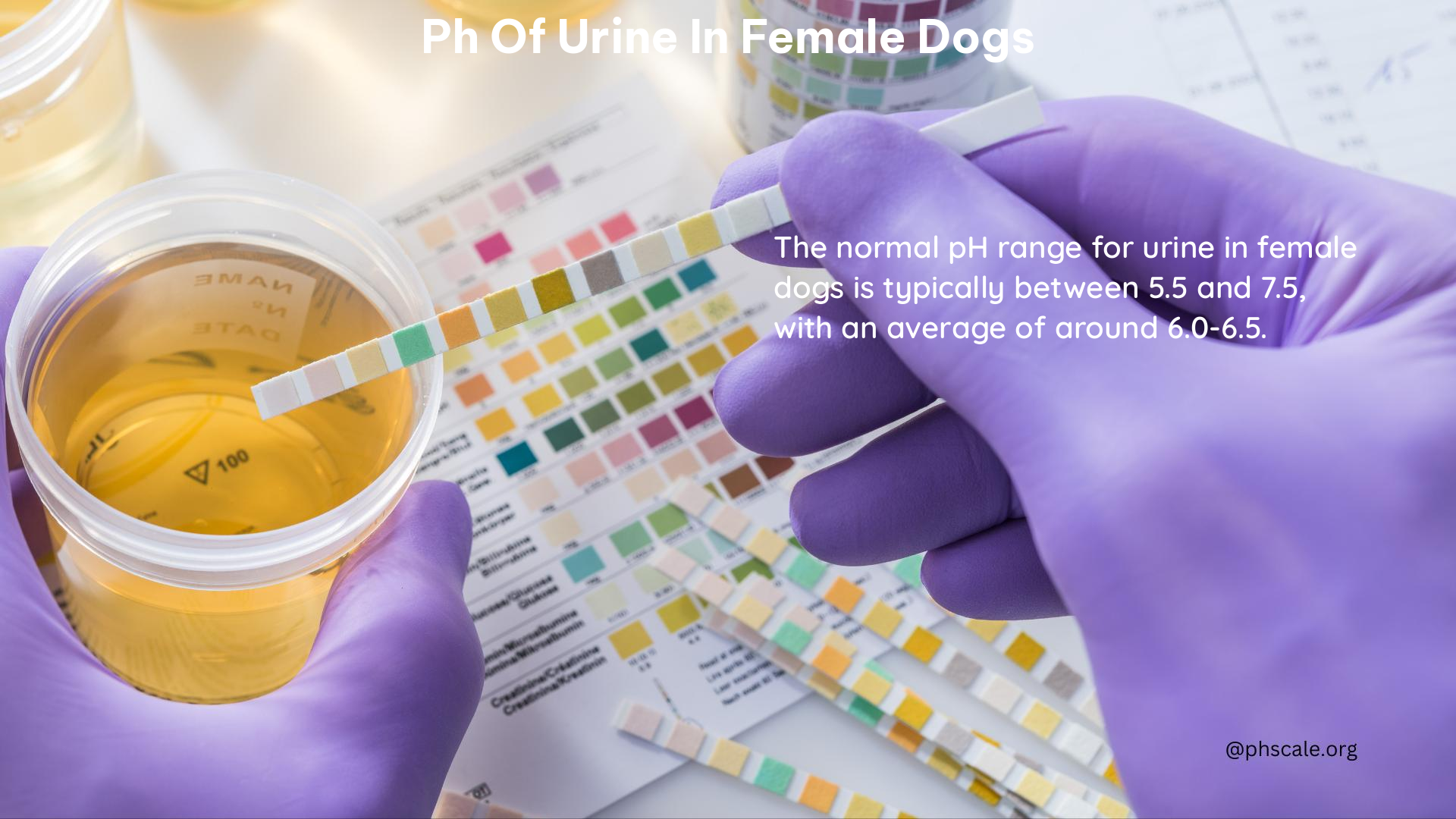The pH of urine in female dogs is a crucial factor in their overall health and well-being. As carnivores, dogs’ bodies are designed to process high amounts of protein, which can lead to slightly acidic urine, typically ranging from 6.0 to 6.5. Maintaining this optimal pH range is essential for preventing urinary tract infections, the formation of crystals, and other health issues.
Understanding the Normal pH Range
The ideal pH range for a female dog’s urine is between 6.0 and 6.5. This range helps prevent the formation of struvite crystals and calcium oxalate stones, which can cause various health problems.
Factors Affecting Urine pH

Several factors can influence the pH of a female dog’s urine, including:
- Diet: A diet high in protein and fat can lead to more acidic urine, while a diet rich in vegetables and dairy products can make the urine more alkaline.
- Age: Older dogs may have a more acidic urine pH due to changes in their metabolism and kidney function.
- Breed: Some breeds may be more prone to certain pH imbalances due to genetic factors.
- Health Conditions: Certain medical conditions, such as urinary tract infections or kidney disease, can affect the pH of a dog’s urine.
Controlling Urine pH
Maintaining a healthy urine pH in female dogs is essential for their overall well-being. Here are some ways to help control the pH:
- Balanced Diet: Ensure your dog’s diet is well-balanced, with the right mix of proteins, fats, and carbohydrates. Consult with your veterinarian to determine the best diet for your dog.
- Supplements: In some cases, your veterinarian may recommend supplements like potassium citrate or ammonium chloride to help adjust the pH of your dog’s urine.
- Hydration: Keeping your dog well-hydrated can help dilute the urine and maintain a healthy pH.
- Natural Products: Some natural products, like Dog Rocks, can help reduce urine nitrogen levels, which can contribute to a healthy pH balance.
Health Implications of Urine pH Imbalances
Urine pH that is too acidic or too alkaline can lead to various health issues in female dogs, including:
- Acidic Urine: Acidic urine can cause the formation of calcium oxalate stones, which can lead to urinary tract infections and other complications.
- Alkaline Urine: Alkaline urine can lead to the formation of struvite crystals, which can also cause urinary tract infections and other health problems.
Monitoring Urine pH
Regular urinalysis is crucial for monitoring your female dog’s urine pH and detecting any potential issues early. Your veterinarian can help interpret the results and make recommendations for adjusting your dog’s diet or care as needed.
Conclusion
The pH of urine in female dogs is an important factor in their overall health and well-being. By understanding the normal pH range, the factors that can affect it, and the steps to control it, you can help ensure your dog maintains a healthy urinary system and avoid potential health issues. Regular monitoring and working closely with your veterinarian are key to maintaining your female dog’s optimal urine pH.
References:
- Merck Veterinary Manual. (2024). Controlling Urine pH in Animals. Retrieved from https://www.merckvetmanual.com/pharmacology/systemic-pharmacotherapeutics-of-the-urinary-system/controlling-urine-ph-in-animals
- NCBI. (2017). Comparison of body condition score and urinalysis variables in dogs with and without calcium oxalate uroliths. Retrieved from https://www.ncbi.nlm.nih.gov/pmc/articles/PMC5370561/
- Animal Medical Center of Chicago. (n.d.). Everything You Always Wanted to Know About Your Pet’s Urine. Retrieved from https://www.animalmedicalcenterofchicago.com/everything-you-always-wanted-to-know-about-your-pets-urine/
- Whole Dog Journal. (2001). Urine Trouble. Retrieved from https://www.whole-dog-journal.com/health/urine-trouble/
- The Pet Resorts. (n.d.). 3 Reasons Your Dog’s Urine Kills Your Grass. Retrieved from https://thepetresorts.com/3-reasons-dogs-urine-kills-grass/
